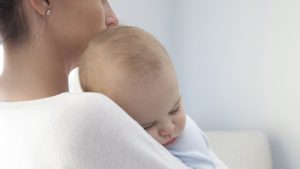Febrile seizure usually occurs in a healthy child, during a sudden fever rise, due to a banal infection:
- While the child’s body is suddenly shaken by spasms (contractions) symmetrical muscle;
- Its members are agitated and jerky involuntary;
- His eyes sometimes roll upward.
The crisis usually lasts from one to five minutes, then the child returns to normal state.
It’s important to stay calm: in general, the crisis will not be repeated. It has no effect on the brain of the child. Good habits to have during a crisis are:
- Lay your child on a comfortable surface and place it to the side to clear his airway and prevent it from choking on his tongue or secretions.
- Remove any objects from his mouth, don’t try to open his mouth and put your fingers because stiffness of the jaw could inflict significant bite.
- Remove any clothing that might interfere with its movements.
- Call 9-1-1 or go to the emergency as soon as possible after a crisis, unless there is a febrile seizure recurrence and the child’s condition is similar to previous episodes . The doctor will assess the cause of the fever and convulsions. Its diagnosis is reassuring in the vast majority of cases. Depending on age and type of convulsion he had, your child may be hospitalized 24 to 48 hours to monitor.
About 5% of children under five years are a crisis of febrile seizures during a high fever. It occurs most often between nine months and three years with a peak around 18 months. It is rare for two years after the brain is then less sensitive to disease.
The crisis is single general but, in 30% of cases, recur at other episodes of fever.
Due to a genetic predisposition, children whose parents have had a febrile seizure are more likely to make in turn.
Sources : Site internet d’enseignement de la faculté de Grenoble / AmeliSanté

